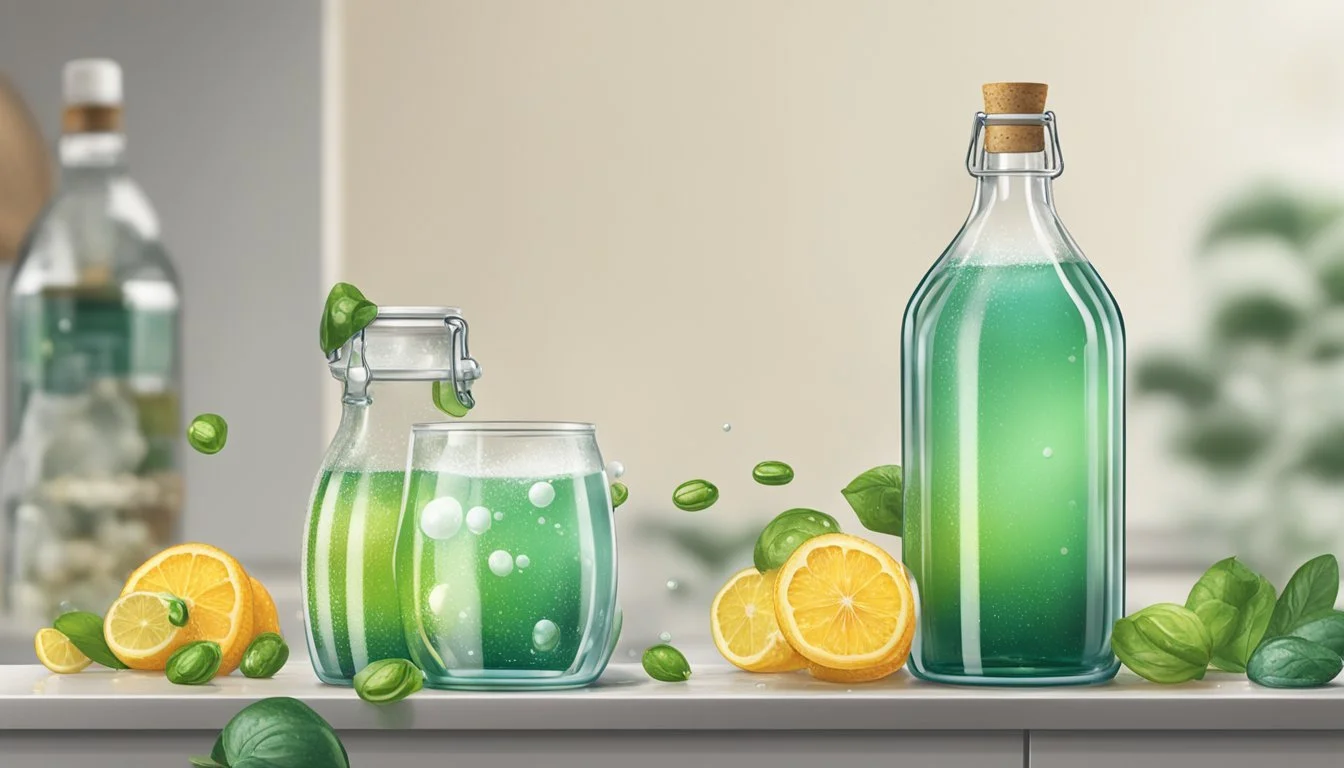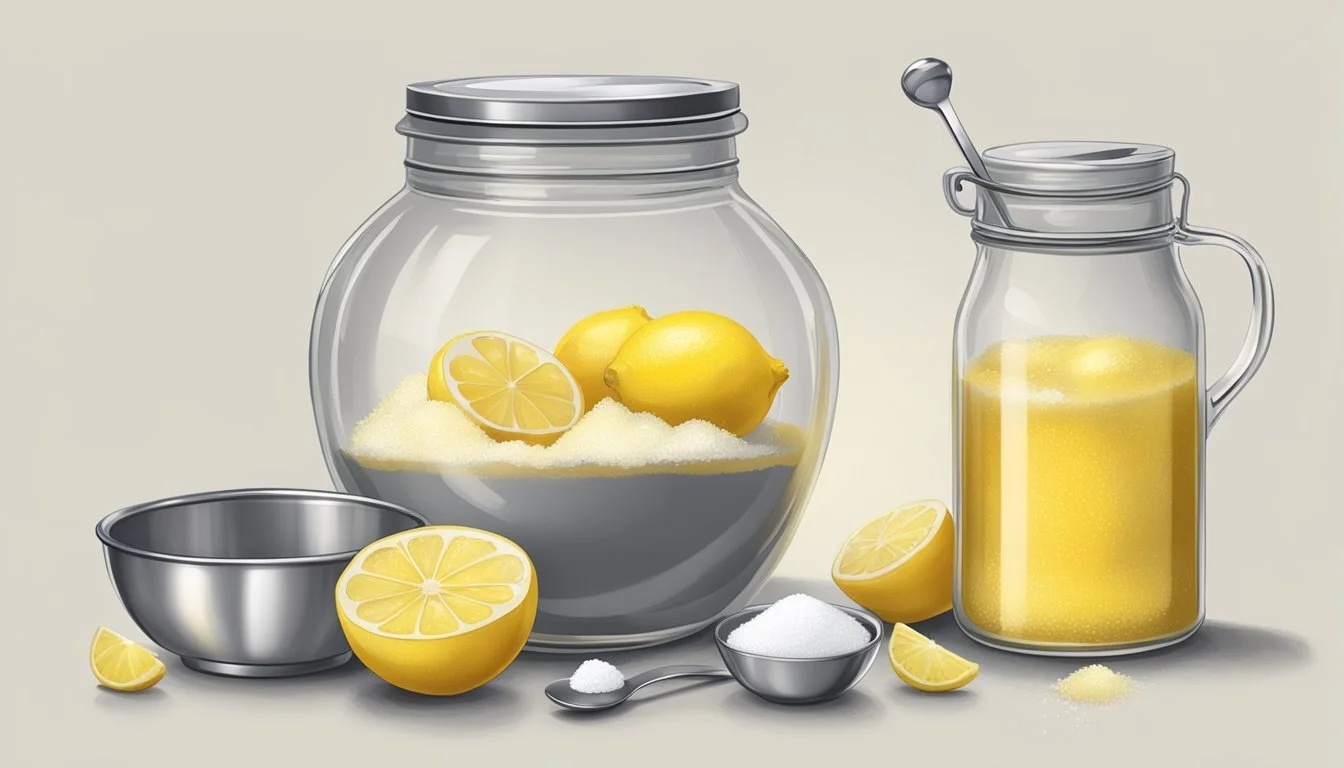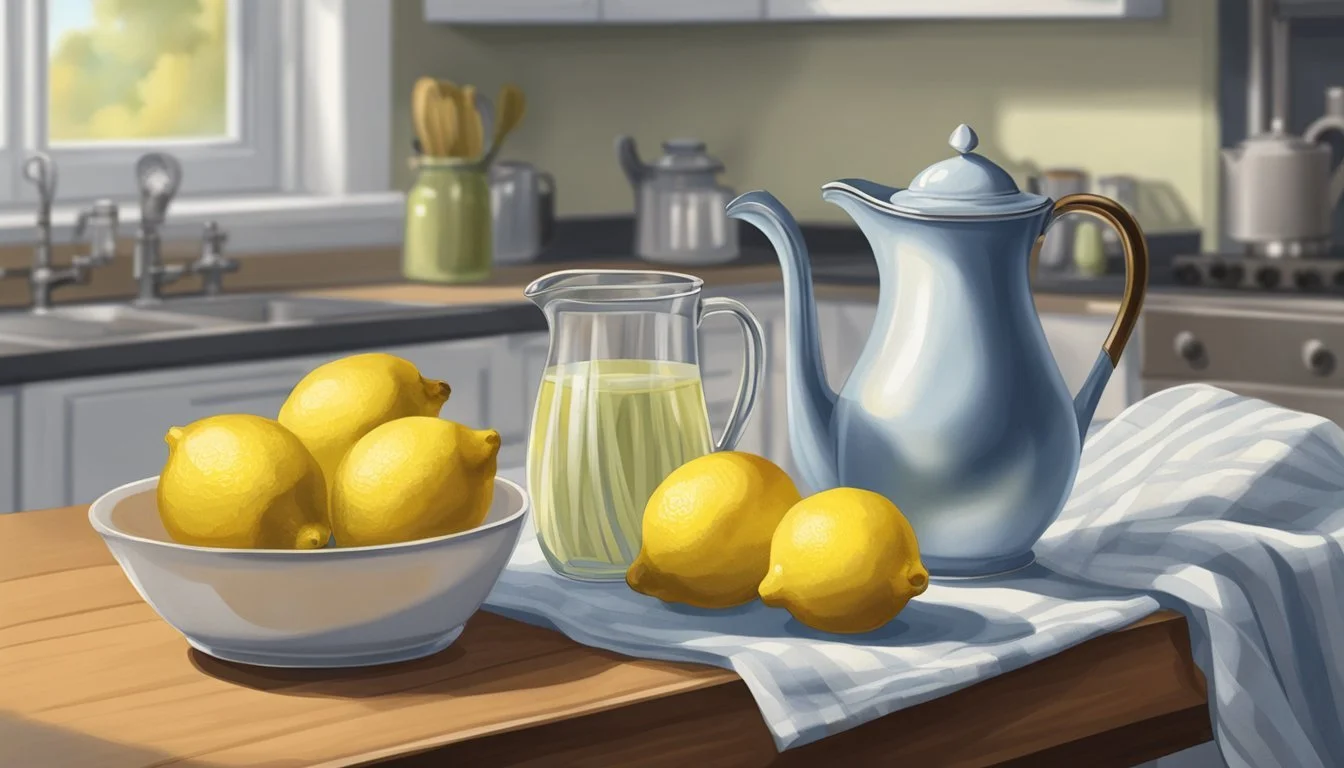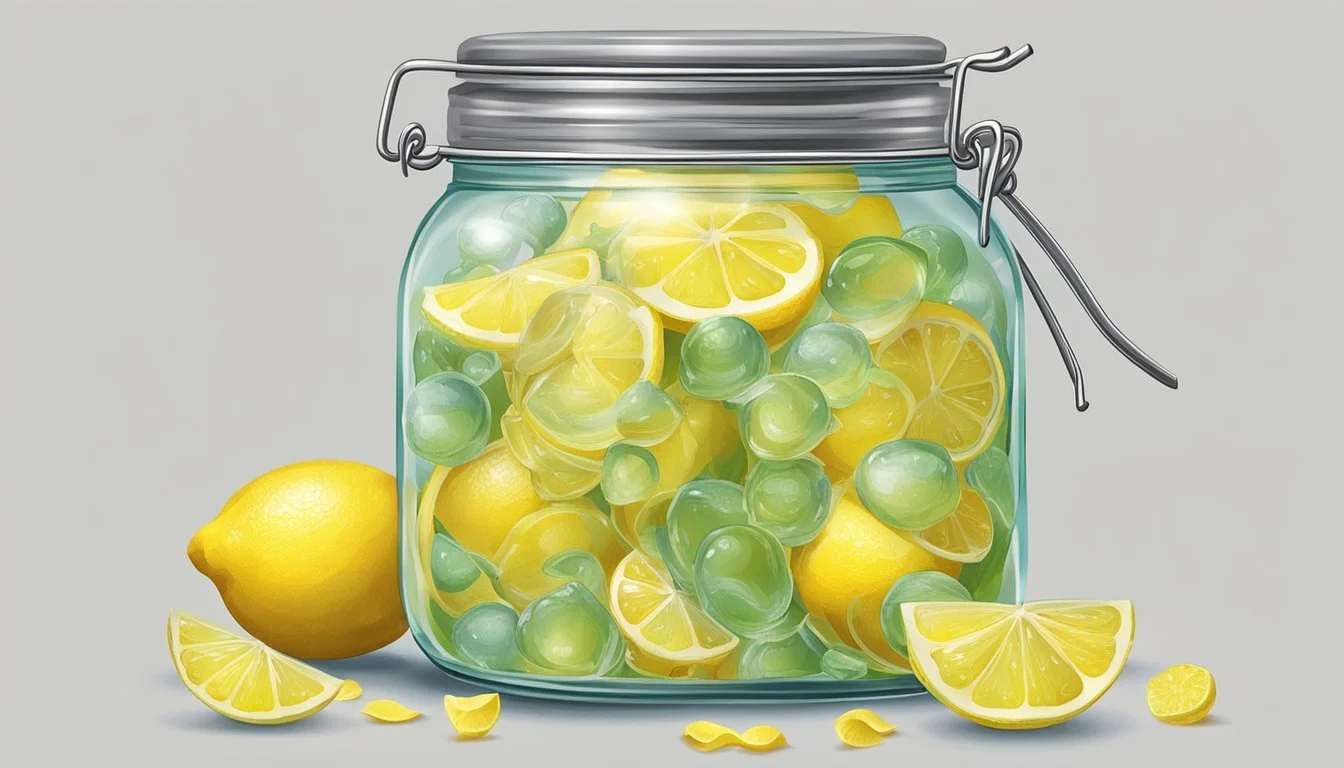How to Ferment Sima
Your Step-by-Step Guide to Traditional Finnish Lemonade
Sima, a traditional Finnish lemon drink, enjoys popularity especially during the Vappu holiday, which marks the arrival of spring in Finland. This refreshingly tart beverage is sweetened with sugars and naturally carbonated through a fermentation process that imbues it with a slight effervescence. Sima's history is deeply rooted in Finnish culture, serving as a customary homemade drink that families prepare with anticipation for the festive season.
The fermentation of sima is a straightforward process that combines the tartness of lemons with the sweetness of sugar. The transformation from simple ingredients to a bubbly, fermented lemonade occurs over several days and involves natural yeast activity. This method of fermentation not only imparts a distinctive flavor but also creates a lightly alcoholic or non-alcoholic drink, depending on the length of the fermentation process.
While traditionally linked with the celebration of Vappu, the appeal of sima extends beyond its cultural significance, hailed for its pleasant taste and simple preparation method. Enthusiasts of home fermentation often embrace sima as an entry point into the craft, finding it a delightful way to explore the age-old practice of fermenting beverages.
History and Significance
Sima, a traditional Finnish beverage, holds a special place in the heart of Finnish culture, particularly during the celebration of Vappu. This event, known as Finnish May Day, is not only a welcome to the spring season but is also deeply rooted in Finnish history as a momentous day for workers and students.
Historically dating back to the 16th century, sima was originally a more coveted drink than beer. Its significance has evolved over time, with its role in Vappu festivities now being its most notable cultural contribution. Sima is an integral part of the nation's heritage and is enjoyed both by adults and children, showcasing its universal appeal.
The beverage itself is a lightly fermented lemon drink, sometimes compared to mead. Its preparation, often a family activity, symbolizes the beginning of mild weather and the abundance of nature. What makes sima unique is its homemade aspect, which carries traditional and cultural importance as recipes are handed down through generations.
The drink’s ingredients are simple and natural: water, sugar or honey for sweetness, lemon for its citrus flavor, and yeast for fermentation:
Water: The base of the drink.
Sugar/Honey: Adds sweetness and aids fermentation.
Lemon: Provides a refreshing zest.
Yeast: Kicks off the fermentation process.
In Finland, sima is not just a beverage; it is a celebratory symbol. As they come together during Vappu, Finns indulge in sima to mark the change of seasons, reflect on their history, and look forward to new beginnings. The making and consuming of sima are imbued with cultural significance, epitomizing Finnish traditions and communal spirit.
Health and Nutritional Benefits
Sima, as a lightly fermented beverage, shares several health benefits commonly associated with fermented foods. These benefits primarily include the presence of probiotics, which are beneficial bacteria that can help balance the gut microbiome. This can lead to improved digestion and a strengthened immune system.
The drink typically contains fewer calories than commercial sodas, making it a lighter option. However, calorie content may vary depending on the amount of sugar used in preparation. Since Sima is homemade, the sugar level can be adjusted to suit dietary needs.
Although it is not a significant source of protein, Sima can contribute to one's daily intake of vitamins and minerals due to the added lemon, which provides vitamin C, and the potential nutritional contributions from the yeast used in fermentation.
Nutritional Breakdown of Sima (estimates may vary by recipe):
Probiotics: Presence due to fermentation process
Calories: Lower than most commercial soft drinks
Protein: Minimal content
Vitamin C: Provided by lemon juice
Minerals: Trace amounts from lemons and sugar
It is important to consume Sima in moderation as part of a balanced diet, as overconsumption could lead to increased calorie intake, and hence, potential weight gain. It should also be noted that the probiotic content can vary significantly depending on fermentation conditions and duration. Those with specific dietary restrictions should consult with a healthcare professional before incorporating Sima or any other fermented products into their diet.
Given its homemade nature, Sima allows for ingredient control, benefiting those who prefer natural, less processed options. It is enjoyed for its refreshing taste as well as its traditional connection to Finnish culture.
Basic Ingredients
The success of fermenting Sima, a traditional Finnish lemon drink, hinges largely on the quality and proportions of its ingredients. The balance of sweetness, acidity, and fermentation must be carefully managed using specific components to achieve the desired refreshing result.
Sima
To make Sima, one begins with water as the base fluid. It is imperative to use clean, preferably filtered water to ensure no impurities interfere with the fermentation process.
Lemon
Lemons provide the characteristic citrus flavor of Sima. Organic lemons are recommended for their natural taste and absence of chemicals. The zest adds aroma while the juice imparts the necessary acidity.
Sugar Variants
Both white sugar and brown sugar are utilized in making Sima. A combination of sugars enhances the flavor complexity, with white sugar dissolving easily and brown sugar offering a hint of molasses taste. Alternatively, honey can be used as a natural sweetener.
Yeast
Yeast is the critical ingredient that drives fermentation, transforming the sugars into alcohol and carbon dioxide. A small pinch of yeast is sufficient to initiate this process, creating the slight effervescence characteristic of Sima.
Raisins
A few raisins are added during bottling as a visual cue for fermentation. They rise to the top once sufficient carbonation has been achieved, signaling that the Sima is ready for consumption. Raisins also contribute a subtle fruitiness to the drink.
Required Equipment
When embarking on the journey of fermenting Sima, it is essential to have the right equipment at hand. This ensures the process is smooth, and the beverage produced is of high quality. The following is a breakdown of the specific tools required for bottling and fermentation.
Bottles
Glass Bottles: One needs a collection of clean glass bottles to store Sima after fermentation. It's important that these bottles can be sealed adequately.
Sterilized Bottles: Before use, all bottles should be sterilized to eliminate any bacteria that might contaminate the Sima.
Bottle Type: Glass Bottles
Quantity Needed: Varies
Note: Dependent on the amount of Sima prepared
Bottle Type: Sterilized Bottles
Quantity Needed: Corresponding
Note: Must be sterilized prior to use
Fermenting Tools
Cork or Caps: Each bottle will require a cork or cap to ensure the beverage is airtight. This assists in the carbonation and prevention of contaminants.
Funnel: A funnel is necessary to transfer the liquid into bottles without spillage.
Sieve: A sieve helps to remove any solid particles such as raisins and lemon residue before bottling.
Tool: Cork/Caps
Function: To seal bottles for carbonation
Tool: Funnel
Function: For mess-free transfer into bottles
Tool: Sieve
Function: To filter out solids prior to bottling
These tools are the cornerstone of successful Sima fermentation, ensuring quality and taste are preserved from preparation to pouring.
Preparation Steps
The preparation of Sima, a traditional Finnish fermented lemon drink, involves creating a sweet citrus base followed by a fermentation process that develops its unique flavor.
Creating the Sima Base
To start with the Sima base, one needs to combine the following ingredients in a large non-metallic container:
Lemon zest and slices to impart the citrus flavor.
A mix of white and brown sugar for sweetness and to provide food for the yeast.
Lukewarm water to dissolve the sugar and support yeast activation without killing it.
It is crucial to ensure that the water is not too hot, aiming for a lukewarm temperature which typically feels slightly warm to the touch.
Ingredients and Ratios for the Sima Base:
Ingredient: Lemon zest
Amount: From 1-2 lemons
Ingredient: Lemon slices
Amount: 2-3 lemons
Ingredient: White sugar
Amount: 1 cup
Ingredient: Brown sugar
Amount: 1/2 cup
Ingredient: Lukewarm water
Amount: To fill the container
Ingredient: Yeast (optional)
Amount: A small pinch (optional)
Begin by boiling part of the water and dissolving the sugars into it to create syrup.
Add the lemon zest and slices to the syrup and wait until the mixture cools down to room temperature.
Top up with the remaining lukewarm water before moving on to the fermentation phase.
Fermentation Process
For the Sima to develop its flavor and a mild effervescence, it must undergo fermentation:
The fermentation process should take place at room temperature, typically around 68°F (20°C) to 72°F (22°C).
If using yeast, it’s added to the lukewarm lemon-sugar mixture to kickstart the fermentation.
Steps for Fermentation:
Once the base is at room temperature, stir in the yeast if using. If not using commercial yeast, the natural yeasts present on the lemon peels can initiate fermentation.
Cover the container partially to allow gases to escape and prevent contaminants.
Allow the drink to sit at room temperature for 24 to 48 hours, checking for the development of light bubbles as an indication of active fermentation.
After the initial fermentation period, Sima is bottled, with a few raisins added to each bottle which helps indicate the level of carbonation as they rise with the bubbles.
The bottles are then capped and placed in a cool area for a secondary fermentation, which can last from a few days up to a week to develop carbonation before it’s ready to be chilled and served.
This process will yield a lightly carbonated, sweet, and tangy Sima, ready for enjoyment during festive occasions or as a refreshing summer drink.
Bottling and Secondary Fermentation
Bottling Sima is a crucial step in achieving the right carbonation and effervescence characteristic of this Finnish lemon drink. Proper technique and understanding of fermentation pressure are integral to creating a delightful fizz while ensuring safety.
Bottling Technique
The individual should ensure the Sima is cool and fermentation has ceased before bottling. They should use clean, non-reactive bottles, preferable glass, with tight-sealing caps to prevent leakage. The bottles need to be sterilized to avoid contamination. A funnel may be used to transfer Sima into bottles, leaving about an inch of headspace to allow for CO2 expansion.
Step 1: Sterilize bottles and caps.
Step 2: Use a funnel to fill bottles, leaving room at the top.
Step 3: Seal tightly with caps.
Carbonation and Pressure
During secondary fermentation, yeast continues to ferment the sugars, producing CO2 and creating carbonation. This process typically occurs within the sealed bottle at room temperature over a few days. Observing the pressure buildup is vital; bottles may explode if over-pressurized.
Pressure Monitoring: Regularly check bottle firmness.
CO2 Escape: To prevent bottle explosions, one may slightly loosen the cap to let out excess CO2, then reseal.
Optimal Fizz: For desired carbonation, one to three days are usually sufficient.
Safety Note: Always handle with care, as bottles under high pressure can be unpredictable. It is recommended to store bottles in a container to contain potential spills from bottle breakage.
Flavoring and Variations
In crafting Sima, flavoring plays a critical role in defining the character of this traditional Finnish beverage. Whether sticking to its roots or embracing a modern twist, the choice of flavoring agents profoundly influences the final outcome, ranging from non-alcoholic lemonade to an effervescent, mildly alcoholic fermented lemon soda.
Traditional Flavoring
The cornerstone of traditional Sima is its lemon profile, which imparts a refreshing citrus taste. Sima is usually enhanced by adding lemon slices and sometimes lemon zest to infuse the brew with a vivid, tangy essence. To enhance complexity, it is common to add a handful of raisins during fermentation, which also contributes to the natural carbonation process.
Modern Twists
A spectrum of modern variations exists for those who wish to experiment. Playful adaptations may include incorporating ginger for a spicy kick or grapefruit for a bitter-sweet depth, adding a unique dimension to the typical lemonade flavor. One can tailor the sweetness level by adjusting the sugar content, or even create a more robust, carbonated beverage by controlling the fermentation length. These contemporary renditions can still respect the Finnish recipe's essence while allowing personal preferences to shine through.
Serving and Storage
Proper serving and storage are crucial to maintaining the quality and flavor of homemade Sima. This section outlines how to serve Sima at its optimal taste and the guidelines for its storage.
Optimal Serving
Sima should be served chilled for the best taste experience. After the initial fermentation, which typically lasts around 24 hours at room temperature, the beverage should be refrigerated to halt the fermentation process, allowing it to cool thoroughly. Just before serving, one may add a few fresh raisins to each glass for a traditional Finnish presentation. The raisins often rise to the top, signaling that the Sima is perfectly carbonated and ready to drink.
Storage Guidelines
Once fermentation is complete and Sima is properly chilled, it should be stored in the fridge to preserve its freshness. Fridge storage limits further fermentation, keeping the sweet and tangy flavor profile of the beverage stable. When sealed tightly, Sima can be stored in the refrigerator for up to one week. Always use clean, airtight bottles or containers to prevent contamination and off-flavors.
Safety and Troubleshooting
When fermenting sima, safety is paramount to prevent accidents and ensure a delicious result. Pressure buildup during fermentation is a significant concern. If left unchecked, containers can explode, potentially causing injury or damage.
Safety Tips:
Monitor Pressure: Regularly check the pressure in the fermentation bottles. If using a screw-cap bottle, slightly loosen the cap to allow excess gas to escape or opt for containers specifically designed for fermentation.
Use Proper Containers: Non-reactive, food-grade materials are essential. Avoid metallic containers, as they can react with the acids during fermentation.
Troubleshooting Tips:
No Fermentation: If fermentation doesn't start, ensure the liquid was at the correct temperature when the yeast was added. Too hot can kill the yeast, and too cold can prevent activation.
Overactive Fermentation: If bubbles form too aggressively, this may cause spillage or overflow. Transfer some liquid to another container to prevent mess and consider reducing the yeast amount in future batches.
Brewing Safety:
Sanitize Equipment: Before use, sanitize all equipment with hot water or a food-grade sanitizer to prevent unwanted bacteria growth.
Temperature Control: Keep the sima at a consistent, moderate temperature during fermentation to prevent the yeast from becoming too active.
Reminder: Always conduct fermentation in a well-ventilated area and store the fermenting sima away from direct sunlight and fluctuating temperatures to minimize risks.
Pairings and Culinary Uses
Sima, the Finnish fermented lemon drink, finds its traditional place at Vappu, a Finnish spring festival. As a mildly alcoholic and sweet beverage, its effervescence provides a refreshing compliment to various festival foods.
Funnel Cake & Tippaleipä
Funnel Cake: The crispness of fried funnel cakes contrasts well with the bubbly lightness of Sima. The drink's citrus notes cut through the sweetness.
Tippaleipä: Another Vappu staple, these doughnut-like pastries are ideally balanced by Sima's tartness.
Traditional Finnish Treats
Donut: A classic pairing, the sugary dough of a donut is enhanced by the zesty lemon and gentle tingling fermentation of Sima.
Pairing Suggestions
Beverage: Fermented Lemonade (Sima)
Reason for Pairing: Complements pastries well due to its refreshing and slightly tart nature
The effervescence of Sima also lends itself to creative culinary uses. Incorporating it in a dessert sauce or glaze provides an unexpected twist to sweet dishes. Its unique flavor profile enhances not just confections but can be a delightful surprise in savory dishes as well.
Beverages
When serving Sima, it's often enjoyed solo. It can also be a base for cocktails needing a fermentative lemon element. In non-alcoholic options, it can be mixed with fruit juices for a complex drink experience.
Frequently Asked Questions
What is the alcohol content in Sima?
The alcohol content in Sima is typically low, usually under 2%, as the fermentation process is short. However, the longer it ferments, the higher the potential alcohol content.
How long can one store Sima?
Sima can be stored in the refrigerator for up to a week. As with many fermented beverages, its flavor continues to develop over time, but it should be consumed before it becomes overly carbonated or sour.
Can different yeasts be used to make Sima?
Yes, various yeast strains can be used, including bread yeast and champagne yeast. Each type may impart a slightly different flavor and may influence the fermentation speed.
Are there alternatives to using regular sugar?
Certainly, bakers have the option to use sugar substitutes like honey, brown sugar, or even artificial sweeteners. Each alternative will change the taste and might affect the fermentation process.
Yeast Variation: Bread Yeast
Characteristic Changes: Traditional and widely available
Yeast Variation: Champagne Yeast
Characteristic Changes: Can create a drier taste profile
Recommended Sugar Alternatives
Honey: Adds a richer, more floral note
Brown Sugar: Imparts a deeper molasses flavor
Artificial Sweeteners: Varies; some may not be fermentable and therefore would only add sweetness without aiding fermentation
Conclusion
Fermenting sima provides a delightful taste of Finnish tradition. This lemon-flavored beverage, slightly sweet with a gentle effervescence, offers a refreshing option for gatherings or a novel DIY kitchen project. To ensure success, they should always use clean equipment and monitor the temperature during fermentation.
Ingredients: Simple, typically involving water, sugar, lemons, and yeast.
Process: It begins with boiling and then cooling the mixture before adding yeast.
Fermentation Time: Generally, it requires 24-48 hours at room temperature.
Bottling: After fermentation, straining it and then bottling it is essential for clarity and appearance.
They might notice subtle variety in flavor when repeating the process, as elements like fermentation time and the type of sugar used can influence the final product. Experimentation can lead to a personalized sima recipe. Once bottled, a few raisins added to each bottle can aid in carbonation and provide a visual indicator of readiness when they rise to the top.
Sima's refreshing characteristics make it a superb drink for warm days and social affairs. Regardless of whether they stick to the traditional methods or implement a modern twist, the result is a cherished beverage that captures the essence of Finnish springtime festivities.









